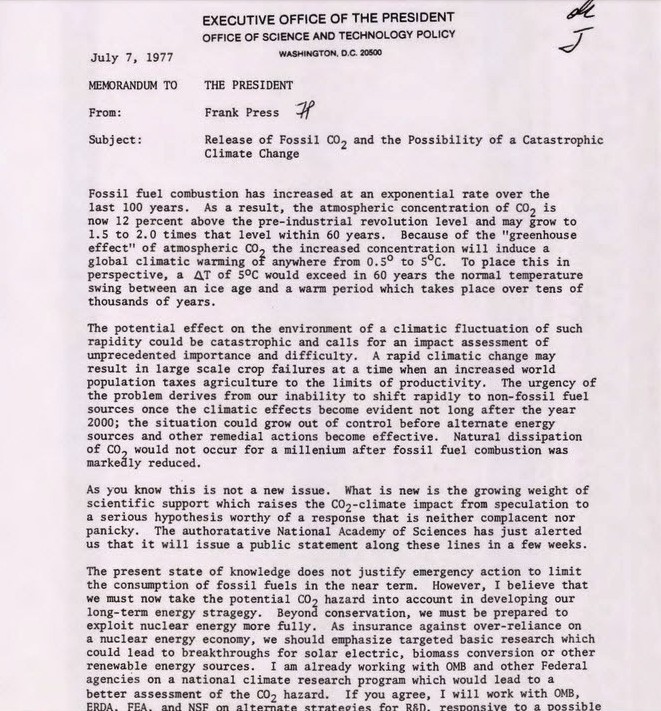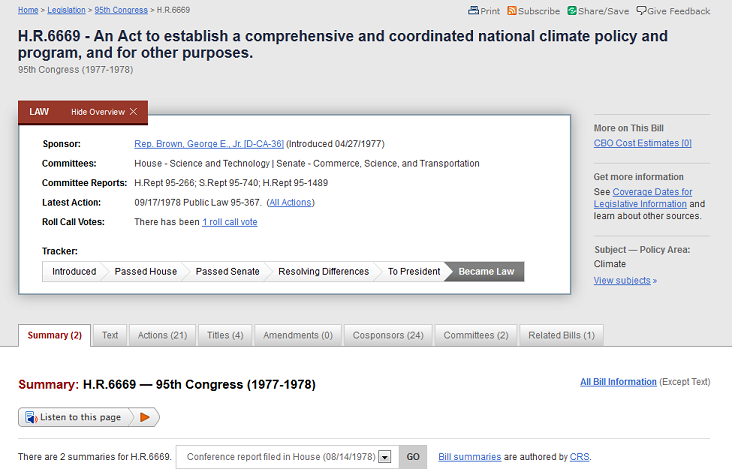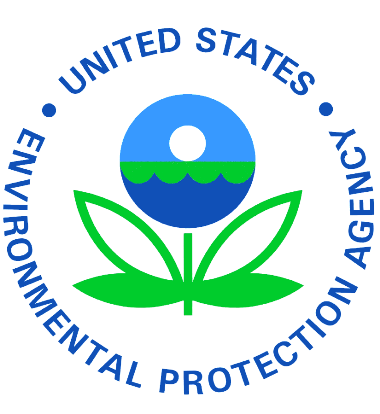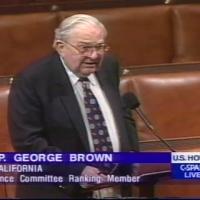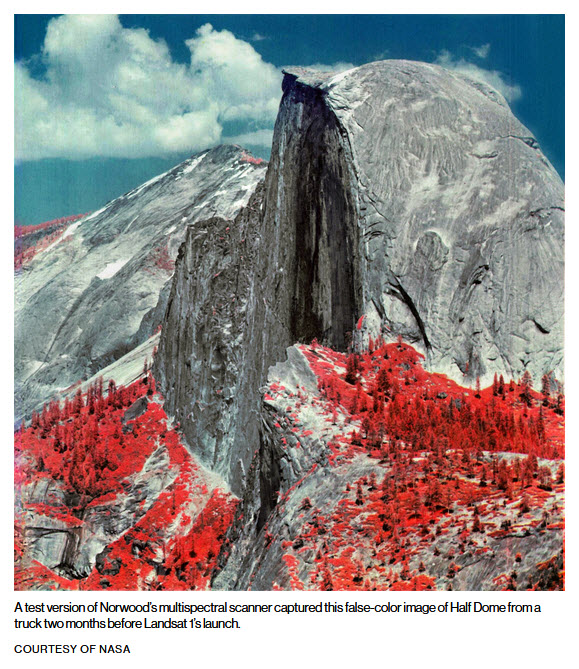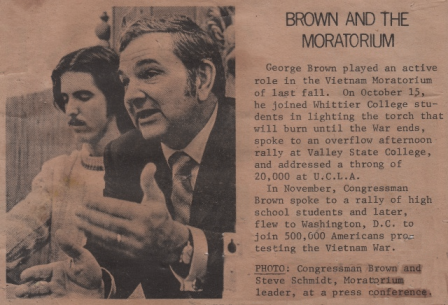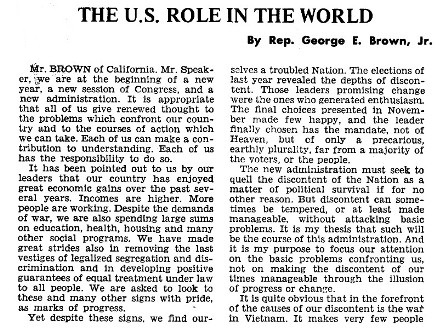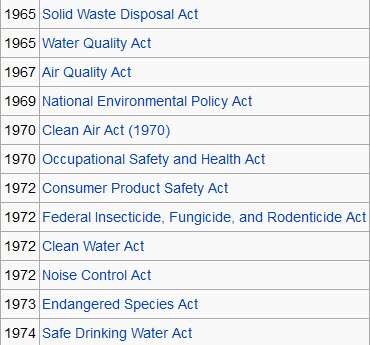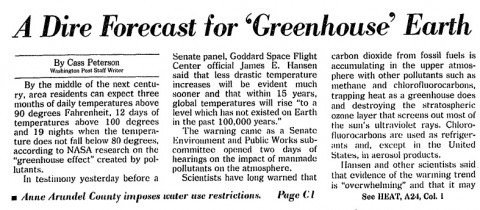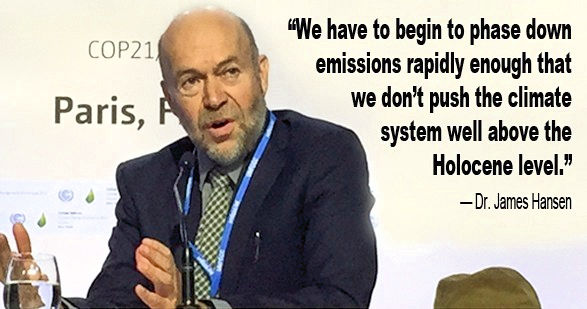George E. Brown Jr
In His Time, a Visionary Leader in Science
- Advancing Historic Environmental Achievements
A generation of environmental policies, programs & law
"My friend George"
GreenPolicy360 Siterunner / SJS: I met George Brown in the mid-1960s. He changed the direction of my life and was integral to my becoming an environmental activist.
George was looking forward to the 21st century and especially to the challenges of environmental earth science programs he led in Congress for decades. He thought that, as the Cold War was ending with the fall of the Berlin Wall and soon thereafter the collapse of the Soviet Union, that pushing for nuclear non-proliferation, his concern for decades, was possible. Nuclear weapons control was doable. George was a visionary, an engineer, a vet who opposed disastrous Vietnam war when we first began our years of work and cooperation. He believed in green politics and was a mentor. He was a leader in Congress from California who helped to shape the modern environmental movement.
Let's look at some of what George accomplished before his untimely passing in 1999:
George was instrumental in proposing and establishing the Presidential Office of Science and Technology Policy in 1976. He was working with the National Academy of Sciences as they released a first-ever climate report.
In 1977 he and the new office sent a first government warning of "climatic fluctuation" and "catastrophic" change to President Carter:
Congressman Brown Out in Front of Climate Action
Climate Change - Global Warming Keyword-Terms
GreenPolicy360 Siterunner: The beginnings of modern environmental and climate science can be traced to the 1960s and 1970s. The U.S. National Academy of Sciences played a key role in laying a foundation of scientific reports and data.
George Brown proposed and drafted the legislation of the first U.S. National Climate Program and shepherded its passage in 1978.
The National Climate Program Act, Public Law 95-367
- This first federal program established to study and assess scientifically the issues and risks of human-caused climate change became a foundation for comprehensive initiatives, with an array of new Earth Science missions led by NASA and NOAA, the EPA and USGS.
At the Beginning of U.S. Science on Global Warming, Strategies & Planning
Energy and Climate Report, 1977, National Academy of Sciences / 175 pp. / PDF via GreenPolicy360
1978, the First Climate Actions
National Climate Program Act, Public Law 95-367
National Climate Program Act of September 1978
In 1979 came the first follow-on National Science Academy report. This study and report of national scientists was prescient and accurate in its global warming predictions.
○
In his rumpled suits and quiet way George E. Brown moved to form coalitions few thought could be formed and garnered support for the first set of U.S. Congressional acts that served as foundation legislation for decades of green progress.
The First Earth Day: Personal Memories by Steven Schmidt of George's Role
Congressman Brown's work advanced environmental air quality and clean air legislation. He introduced the nation's first bill to ban lead in gasoline and was at the forefront of the Clean Air Act. He attacked Los Angeles smog, some of the worst air quality of any city in the world at the time and the air standards that came out of California became models worldwide. He succeeded in clean air and water efforts, though rarely given credit given his quiet approach to accomplishing big picture goals.
George was a key player in legislation founding the Environmental Protection Agency.
As the LA Times noted (without pomp or circumstance) in George's obituary in 1999: "He championed the creation of the federal Environmental Protection Agency". The creation of the EPA was in many ways Congressman George Brown's vision achieved..."
The founding of the EPA was based on new realizations of science and the environment. The vision of the "Whole Earth" that began with unprecedented Apollo photos on the cover of Life magazine in January 1969 led to a coming together of education, students 'teach-ins', scientific space missions studying earth systems for the first time, and popular demands for environmental protections.
A leader and a chairperson on the House science committee for over 30 years, George legislatively engineered an array of science efforts, including one that greens look to as prescient -- climate science.
When Congressman Brown drafted originating legislation establishing a national climate change research program via the National Climate Program Act of 1978, the scientific community and nation were just beginning to awaken to a new national security threat. I remember his concern, our concern. He was trained as a scientist, an engineer, with an ability to see facts and data sets in a way others could not.
Representative Brown was out in front of "Big Science". In his decades on the House Science, Space & Technology Committee, he worked to expand the reach of science. He knew that good data enabled good policy decisions. He pressed for first-generation earth science satellites and ongoing earth monitoring missions and data sharing.
Among his many initiatives, George Brown was a key figure in proposing, establishing, and then saving the Landsat program and its unique 'open-access' database of Earth Science imaging when President Reagan attempted to shut Landsat down. Landsat was a model for all the following earth science research missions from space and is now moving into its fifth decade with Landsat 9.
Earth Science Research from Space
- Landsat and Virginia Tower Norwood
Update: April 2021
SJS/GreenPolicy360 Siterunner:
A tip of our GreenPolicy360 hat to George E. Brown Jr who envisioned the Landsat's mission, the beginning of earth imaging and open access to the data and as a science leader in the US Congress supported, expanded and protected the earth science mission over the decades. The launch now, in April 2021, of Timelapse by Google Earth realizes a next step in George's decades-long quest to bring knowledge of our home planet to all citizens.
Rebecca Moore: "This work was possible because of the U.S. government and European Union’s commitments to open and accessible data. Not to mention their herculean efforts to launch rockets, rovers, satellites and astronauts into space in the spirit of knowledge and exploration. Timelapse in Google Earth simply wouldn’t have been possible without NASA and the United States Geological Survey’s Landsat program, the world’s first (and longest-running) civilian Earth observation program, and the European Union’s Copernicus program with its Sentinel satellites."
Timelapse from Google Earth
Welcome to Timelapse!
Rebecca Moore, Director, Google Earth, Earth Engine & Outreach:
To explore Timelapse in Google Earth, go to g.co/Timelapse — choose any place on the planet where you want to see time in motion.
Launch Date: April 15, 2021
Thirty plus years setting the agenda for visionary science in the House of Representatives
Rep. George E. Brown, an activist member and for many years chair of the House Committee on Science, Space, and Technology
At the beginning of the 'space race', the House Committee on Science and Aeronautics was created by the 85th Congress in 1957 to oversee the newly-created National Aeronautics and Space Administration (NASA). The Science and Aeronautics Committee was the first committee since 1892 to be established for an entirely new area of jurisdiction. The committee’s jurisdiction over the years has expanded to include most civilian non-medical scientific research throughout the government, including National space policy, Earth remote sensing policy; Space commercialization, including commercial space activities relating to the Department of Transportation and the Department of Commerce, the National Science Foundation, the Energy Department, the National Institute of Standards and Technology (NIST), EPA, NOAA and the Department of Homeland Security. (Informally known as the Science committee, the committee's name was change to the "Committee on Science and Technology" in 1974. At that time, the Committee’s jurisdiction was expanded to include legislation related to energy, the environment, the atmosphere, civil aviation research and development, and the National Weather Service. The Committee on Science and Technology was also given a "special oversight" function providing for exclusive responsibility among all Congressional Standing Committees to review and study, on a continuing basis, all laws, programs and government activities involving Federal non-military research and development. In its early years, the Committee was an important partner in the Apollo Program that led to a man landing on the moon and strengthening science education and scientific research. After the Committee’s role expanded, the Committee has played an important role in much of the legislation Congress has considered dealing with domestic and international science, technology, standards, and competitiveness. In the 112th Congress, Chairman Hall changed the Committee's name to the "Committee on Science, Space and Technology."
- ○ ○ ○ ○ ○ ○ ○ ○ ○ ○ ○ ○ ○ ○ ○ ○ ○ ○ ○
Via Wikipedia / https://en.wikipedia.org/wiki/George_Brown_Jr.
Brown was known as a champion for science. He left behind a deep and expansive legacy that has shaped science and science policy in America. Among some of his many accomplishments during his service on the House Science Committee:
• Established the first federal climate change research program in the Federal Climate Program Act of 1978
• Established the Office of Science and Technology Policy
• Established the Environmental Protection Agency
• Established the Office of Technology Assessment
○ ○ ○ ○ ○ ○ ○ ○ ○ ○ ○ ○ ○ ○ ○ ○ ○ ○ ○ ○ ○ ○ ○ ○
George E. Brown Jr. - East LA to 'Planet Citizen'
George's Obituary:
Born: March 6, 1920 - Died: July 15, 1999 (aged 79)
Los Angeles Times, July 17, 1999
George's Memorial Service / C-Span
○ ○ ○ ○ ○ ○ ○ ○ ○
A Conversation with George E. Brown Jr.
- The Congressman Who Loved Science
Mr. Brown, 79, has been a crucial supporter of manned and unmanned space exploration. He was an author of legislation creating the Environmental Protection Agency, a prime mover behind efforts to include ozone layer protections in the Clean Air Act...
"From my earliest days, I was fascinated by science," Mr. Brown said in his offices on Capitol Hill, his wife, Marta, at his side. "Also by my earliest days, I was fascinated by a utopian vision of what the world could be like. I've thought that science could be the basis for a better world, and that's what I've been trying to do all these years."
○ ○ ○ ○ ○ ○ ○ ○ ○ ○ ○ ○ ○ ○ ○ ○ ○ ○ ○ ○ ○
George Brown goes deeper Green
Recollections from 1977
Not many U.S. Congressmen can claim to have an "integral urban district office" complete with solar heating and cooling, a lean-to greenhouse, and bee-hives. Representative George E. Brown, Jr. (D-Calif.) can, however ... because he does have just such office facilities.
Two years ago — when Congressman Brown decided that he wanted solar heating for his Colton, California office building (an old house located in a semi-residential part of town) — he asked his staff to design and install a low-cost, low-technology heating system by themselves. He told his aides that they were free to seek expert advice, but that they should attempt to do as much of the actual construction as possible.
So while Brown was away in Washington, his staffers outfitted the building with an air-handling, "active" solar heating setup that employs a single large wood-and-fiberglass solar collector and a bin loaded with 13 tons of rock for heat storage ... a setup that — so far — has provided virtually 100 percent of the office building's winter heating needs. (The same system can be used to provide cooling during the summer, although — because of the desert-like temperatures that hit the area during the summer months-supplemental cooling must also be used.)
In back of the aging office structure, Brown's aides built a lean-to "solar greenhouse" that furnishes the main house with additional solar heating and provides the Congressman's staff with a year-round supply of fresh vegetables.
A year or so ago, Brown's staff members decided they wanted to "raise" honey as well as vegetables ... so they "coaxed" a swarm of bees into an empty hive, and within six months harvested 100 pounds of the golden sweetener!
Because of the great amount of public interest in these and other of the Congressman's activities, Brown recently encouraged the Agricultural Division of the University of California's Cooperative Extension to apply for federal funding to open a community food preservation center in nearby Riverside, California. The application was approved.
If it has to do with living-better-for-less alternatives, chances are the honorable George E. Brown, Jr. knows about it ... or is already doing it!
-- Linda Martin / Mother Earth News
○ ○ ○ ○ ○ ○ ○ ○ ○ ○ ○ ○ ○ ○ ○ ○ ○ ○ ○ ○ ○ ○ ○ ○ ○
Reflecting on the Life of George E. Brown
SJS / GreenPolicy Siterunner: George was the man who convinced me to look at politics as a serious calling. When I was a young teenager in East LA, looking out at a larger world in which I had yet to travel, and debating nuclear proliferation, the debate topic of the year as high schools were considering why sirens were on occasion loudly going off and forcing us to crawl under our desks, the man I got to know in Monterey Park was at the beginning of his career in politics and science.
For the next 35 years he was my mentor and an inspiration of what can be done to make a difference and create a better world. George was a visionary with tousled hair, a professorial look, a smelly pipe and a twinkle in his eye. He was always there for his constituents, like me, an East LA kid who grew up to be a friend and cohort as we did green work over the years.
George was a real presence in Congress, in science and environmental achievements, from the first Earth Day to the first federal program to study climate science, from the first earth science research from space to 'big science' projects that carry on to this day.
Back in the early days, we would speak of these political efforts, and especially the immediate reality of the 'smog' in LA, which might have been at that time the worst in the world, and how we needed to clean up the air. I spoke of my asthma with George and his engineering background provided his perspective with advantages over the run-of-the-mill politicians in DC in knowing how to best address the pollution from cars, the gas engines that were becoming ubiquitous in fast-growing suburban Southern California.
When your GreenPolicy360 siterunner was in college at USC in the late 1960s and becoming deeply involved in politics, George and I continued to speak of the children in Los Angeles and their lung problems and scientific and medical studies that were vividly (shockingly) demonstrating the consequences of growing up in the most polluted air in the country.
George helped my organizing work and I helped his especially in the "decade of the environment" following the first Earth Day in 1970 and the building of a foundation of environmental legislation.
As George became a leader in Congress and ran for U.S. Senate, opposing the Vietnam war and I helped organize in DC what became the largest anti-war group, the Vietnam Moratorium Committee, we spoke of war and peace and how to change the nation's war policies and role in the world. His efforts to change U.S. foreign policy led to the first Earth Day.
George worked tirelessly in Congress for change. With saving the environment in his sight, he moved conservative and liberal politicians in his direction. George saw connections that transcended states and nations. A key goal was setting up an EPA as an umbrella agency to coordinate environmental federal and federal-state efforts... George was a "first-mover" as the term has come to be known. He had a big-picture plan and set out to accomplish it. He succeeded on multiple fronts, pushing forward the idea and the vision for 'omnibus' legislation. The Environmental Protection Agency was founded and historic initial green laws and regulations for environmental protection and security were passed.
•
George was among the first voices to be raised warning about the environmental threat of climate disruption and, although few realize, he was at the forefront of the initial efforts to study the climate, pushing the development of initial atmospheric science programs and missions of NASA and public/private research. He combined his engineering skills with his legislative reach.
George E. Brown, in fact, drafted the "National Climate Program Act" of 1978.
1978 Climate Act PDF via GreenPolicy360
Rep. George Brown brought his extensive work with U.S. top scientists, featured in the work of 1977's Energy and Climate Report of the National Academy of Sciences and follow on 1979 Academy Climate Science report that was presciently accurate in its predictions.
The Congressman-Engineer emphasized, constantly to me and in his work, the essential important of having accurate data in order to make the best possible engineering decisions. He imprinted, if I could use this word to its fullest meaning, the vital nature of gathering information with studies over time to monitor changes. He was in a position, one of the most powerful positions in government, to shape the policies of science -- atmospheric science, earth science, big science.
Whenever we see the NASA 'marching directive' here, think of George. The original mission statement of our nation's first ventures into space began with studying the home planet.
The Congressman left us a legacy of vision and action against threats to the atmosphere, earth's life systems, and sustainability.
We have, all who believe in the importance of science, carried forward his thoughts over the years since the 1960s and 1970s. As best we could, we have carried on against deep odds and opposition by those with other goals.
The Original Mission Statement of NASA ((1958) provided Congressional intent and guidance to the first generation of space programs. George, if he were here, would've done I am certain everything within his power to protect the original mission statement...
Andrew Revkin/July 22, 2006/ NYT
“To understand and protect our home planet; to explore the universe and search for life; to inspire the next generation of explorers ... as only NASA can.”
In February 2006, the phrase "to understand and protect the home planet" was quietly removed from the National Aeronautics and Space Administration (NASA)'s official mission statement.
It is the first time since NASA’s founding in 1958 that the mission statement does not explicitly include mention of the Earth.
•
George, as chairman of the House of Representatives Committee on Science, Space, and Technology, over the years until his sudden death in 1999 played a key role in nuclear weapons oversight. As with the National Climate Act he drafted in the 1970s identifying global warming as a serious, even existential threat, his focus on the threat from his first year in office in the early 1960s saw him leading efforts to reduce the nuclear stockpile and reducing the imminent threat of global destruction. The Congressman's work on non-proliferation stands out. George's letter to the head of the Department of Energy in February 1992 remains a testimony to the need for a new "strategic plan" for the Department of Energy (DOE) nuclear weapons labs.
Congressman Brown an alternative to the existential threat of nuclear weapons as the Cold War came to an end and alternatives were envisioned. Your GreenPolicy360 editor, at that time, was often in communication with the Congressman on this issue, as I also worked alongside Governor Jerry Brown in formulating the presidential campaign platform of our campaign in 1992. Nuclear issues were top of mind, as were nuclear reduction efforts, non-proliferation and treaties to reduce nuclear stockpiles and build monitoring conventions. George assisted many public interest groups in nuclear oversight work, such as the Los Alamos Study Group. His quest to promote peace was steady.
File:George Brown letter-1992 to US Energy Dept-nuclear weapons future.pdf
Today many of the actions of George Brown continue as models for citizens, cities and nations of the world. California and a green political/environmental protection movement that George helped to begin continue to be out in front with ideas to improve quality of life.
In our GreenPolicy360 work, George's work continues. Even as political opposition to environmental work, anti-nuclear work, anti-war work is at risk, as we look out at a strategic horizon with pressing demands, the foundations put in place by an earlier generation remain strong.
George remains with us always in his legacy of accomplishment. I miss him often but know he is still around. I feel him when I write of green ideas and look to our kids and education and our shared future...
○ ○ ○ ○ ○ ○ ○ ○ ○ ○ ○ ○ ○ ○ ○ ○ ○
• http://www2.epa.gov/aboutepa/epa-order-11102 (page removed during Trump administration...)
• http://www2.epa.gov/aboutepa/birth-epa (page removed)
• http://www2.epa.gov/aboutepa/guardian-epas-formative-years-1970-1973 (page removed)
○ ○ ○ ○ ○ ○ ○ ○ ○ ○ ○ ○ ○ ○ ○ ○ ○
The George E. Brown, Jr. Archive at the University of California
"Congressman, a visionary who championed the environment, alternative energy, human rights and education. When he died in office in 1999 at the age of 79, he left a legacy that included establishment of the Environmental Protection Agency, the Office of Science Technology Policy, Section 8 housing for low-income people and scholarships for veterans."
Details of that legacy – from his first political post as mayor of Monterey Park, Calif., to his chairmanship of the House of Representatives Science Committee – survive in 525 boxes and nine file cabinets of personal papers donated recently to the University of California, Riverside by his widow, Marta Brown...
- ○ ○ ○ ○ ○ ○ ○
• http://www.greenpolicy360.net/w/Environmental_movement
• George Brown on the Omnibus Environmental Bill, 1969
• https://www.greenpolicy360.net/w/Ethics_and_Climate_Change
• @GreenPolicy360, 'The beginning of the modern environmental era'
SJS/GreenPolicy Siterunner:
Unprecedented environmental protection, a vision that began a process that continues to this day...
Green, environmental public policies, a foundation on which to build sustainable quality of life...
Water quality act
http://www.encyclopedia.com/article-1G2-3456400109/water-quality-act-1965.html
Air quality act http://scholarship.law.duke.edu/cgi/viewcontent.cgi?article=3197&context=lcp
National environmental policy act http://en.wikipedia.org/wiki/National_Environmental_Policy_Act
Clean air act (extended 1970) https://www.gpo.gov/fdsys/pkg/STATUTE-84/pdf/STATUTE-84-Pg1676.pdf
Occupational safety and health act http://en.wikipedia.org/wiki/Occupational_Safety_and_Health_Act
Consumer product safety act http://en.wikipedia.org/wiki/Consumer_Product_Safety_Act
Federal insecticide, fungicide and rodenticide act http://www.epa.gov/agriculture/lfra.html
Clean water act http://en.wikipedia.org/wiki/Clean_Water_Act
Noise control act http://en.wikipedia.org/wiki/Noise_Control_Act
Endangered species act http://www.fws.gov/endangered/laws-policies/
Safe drinking water act http://water.epa.gov/lawsregs/guidance/sdwa/basicinformation.cfm
○ ○ ○ ○ ○ ○ ○ ○ ○ ○ ○ ○ ○ ○ ○
1988, a History-making Senate Hearing
James Hansen's Warning to Congress in 1988:
- Ten years after the National Climate Program Act was drafted by Representative Brown and the Climate Act's passage in 1978 that began the federal government's action and further study of climate change, impacts and risks, Professor Hansen strongly warns the US Senate of the rising danger of climate change.
- More re: James Hansen's testimony to Congress in 1988, thirty years on ...
- 1981
○
Note: June 3, 2016
Siterunner / SJS: As a member of the Wiki community, we/GreenPolicy are presently acting to update the Wikipedia biography of Congressman George E. Brown. The following update expresses our point of view and current communications with Wikipedia.
GreenPolicy Siterunner / June 2, 2016: I'm corresponding w/ a Wikipedia editor to update George E Brown's bio -- some changes are made and this one below is now under consideration - basically I want them to add the Congressman's central role in proposing/drafting key environmental legis that began the modern envir movement, including drafting this statute, the beginning of the Federal climate change research program in 78, no inconsiderable accomplishment considering what is at stake.
GreenPolicy Siterunner: Here are a few lines that I wrote to the corresponding Wikipedia editor re: the George Brown listing:
>The Congressman served for more than 30 years on the House Science Committee. See the last paragraph here, a NY Times citation:
>Consider this quote from the NY Times (a few months before his death in 1999):
>George Brown was an author of legislation creating the Environmental Protection Agency, a prime mover behind efforts to include ozone layer protections in the Clean Air Act and an advocate of restructuring the national weapons laboratories to meet the needs of a peacetime economy.
>Also re the current Wikipedia bio wording >Among some of his many accomplishments during his service on the House Science Committee:
>>Established the first federal climate change research program in the Federal Climate Program Act of 1978
>In fact George Brown was the principal author of the initial legislation and leader on climate change/policy
Considering the importance of this subject, climate change, I'd recommend wording that is more exact -- eg, "author of legislation that established..." and adding a link to the exact Legislative Bill ie, Public Law 95-367 https://www.gpo.gov/fdsys/pkg/STATUTE-92/pdf/STATUTE-92-Pg601.pdf.
Adding specific language about Representative Brown's drafting the bill is historically important and would be more precise than "during his service on the House Science Committee"... "established the first federal climate change program..."
○
Over the years George Brown worked alongside California legislators and political leaders to push a new environmental agenda. In his powerful roles out in front of the the US House of Representatives, especially on science and environment, George created a legacy.
George Brown and California Governor Jerry Brown allied in many initiatives and legislative efforts that led the nation, states -- and the world -- in shaping a visionary environmental record. California's 'out in front' achievements as a leader in environmental work and model green policies and practices continue forward, watched and replicated by countries, states and communities globally.
Here is a tip of the hat with lasting respect to George Brown, and Jerry Brown, and science, and environmental green visionaries around the world.
○
https://landsat.gsfc.nasa.gov/
'https://www.greenpolicy360.net/w/Virtual_Earth
'http://www.greenpolicy360.net/w/Landsat_data_users_handbook
Thank you George for LANDSAT and for all your accomplishments
50th Anniversary of Landsat in 2016
December 28, 2018
GreenPolicy360 Siterunner: William Westermeyer writes of a science agency that was established thru the work of Congressman George E Brown, Congressman from East LA and a leader of California's initiatives in environmental science. Over the years, the science and technology office has put forward by Congressman Brown has continued to be available to advise the president, Office of Science and Technology Policy yet currently, in the Trump presidency, it is is moribund with its science executive positions going unfilled by the president.
President Trump is on record saying he doesn't need the science and he has called global warming a "hoax" on multiple occasions. The head of the government agency that monitors climate change says that he has never discussed the issue with the current U.S. President, Donald Trump. Acting National Oceanic and Atmospheric Administration (NOAA) chief Adm. Timothy Gallaudet: "I personally have not briefed the president on climate change."
The nation, and world, heads into 2019 as science and guidance of visionary leaders are set aside.
• https://www.greenpolicy360.net/w/Climate_News
• https://www.greenpolicy360.net/w/George_E._Brown_Jr
··································································
On the 50th Anniversary of the Apollo 8 Mission in 2018 ...
"Earthrise" ... Whole Earth vision and the beginning of the modern Environmental Movement
December 24, 2018
Via CNN / Fifty years after "Earthrise"
Via USA Today / "Earthrise" on the Fiftieth Anniversary
• https://www.greenpolicy360.net/w/File:Apollo.jpg
• http://www.bbc.com/future/story/20181220-the-nasa-mission-that-broadcast-to-a-billion-people
• https://qz.com/1501935/photos-apollo-8-brought-us-the-moon-as-never-seen-before/amp/
• https://petapixel.com/2018/12/20/how-nasas-iconic-earthrise-photo-was-shot/
- Air Pollution
- Air Quality
- Anthropocene
- Atmosphere
- Atmospheric Science
- Biodiversity
- Citizen Science
- Clean Air
- Clean Water
- Climate Change
- Climate Policy
- Earth
- Earth360
- EarthPOV
- Earth Day
- Earth Imaging
- Earth Observations
- Earth Science
- Earth Science from Space
- Earth System Science
- Eco-nomics
- Ecological Economics
- Ecology Studies
- Environmental Laws
- Environmental Protection
- Environmental Security
- Environmental Security, National Security
- EOS eco Operating System
- Gas-Powered Transportation
- Global Security
- Global Warming
- GreenPolicy360
- Green Politics
- Housing
- Maps
- NASA
- New Definitions of National Security
- NOAA
- Nuclear Nonproliferation
- Nuclear Proliferation
- Nuclear Weapons
- Oceans
- Planet Citizen
- Planet Citizens
- Planet Citizens, Planet Scientists
- Pollution
- Radioactive Pollution
- Resilience
- Rivers
- Strategic Demands
- Sustainability
- Sustainability Policies
- Toxics and Pollution
- US Environmental Protection Agency
- Water Quality
- Whole Earth
